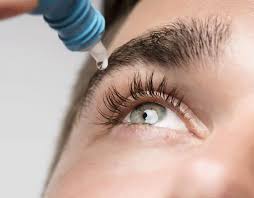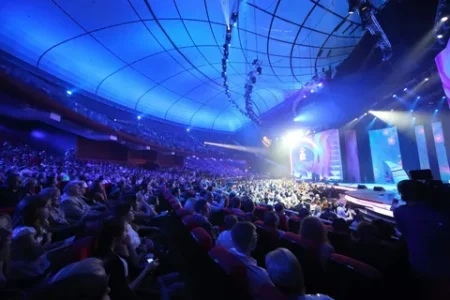Beyond Drops: Exploring Laser Treatment for Dry Eyes
Dry eye syndrome, a persistent and often debilitating condition, affects millions worldwide, manifesting as irritation, redness, burning, a gritty sensation, and sometimes even blurry vision. While traditional treatments like artificial tears, warm compresses, and prescription eye drops provide relief for many, they often manage symptoms rather than addressing the root cause. For those seeking more comprehensive and long-lasting solutions, laser treatment for dry eyes represents a significant advancement, offering a targeted approach to improve tear film quality and reduce inflammation.
Understanding the Root Causes of Dry Eye
To appreciate how laser treatments work, it’s essential to understand the underlying causes of dry eye. Tears are vital for eye health, forming a protective film with three main layers:
- Aqueous (watery) layer: Provides moisture and nutrients.
- Mucin layer: Helps tears spread evenly.
- Lipid (oily) layer: Produced by meibomian glands along the eyelid margins, this layer prevents tear evaporation.
Most chronic dry eye is caused by Meibomian Gland Dysfunction (MGD), where these oil-producing glands become clogged or inflamed, leading to insufficient or poor-quality oil in the tear film. This causes tears to evaporate too quickly, creating a cycle of dryness and inflammation.
The Rise of Laser Therapies for Dry Eye
Laser treatments for dry eye are innovative, non-invasive methods that aim to address the underlying issues, particularly MGD and inflammation. The two most prominent types of laser therapies utilized are:
- Intense Pulsed Light (IPL) Therapy:
- How it Works: IPL uses specific wavelengths of scattered light pulses applied to the skin around the eyelids and face. The light is absorbed by red blood cells in the inflamed capillaries around the meibomian glands. This absorption converts light energy into heat, which:
- Melts Blockages: Warms and liquefies hardened oil (meibum) within the meibomian glands, helping to unclog them.
- Reduces Inflammation: Closes off abnormal blood vessels that contribute to inflammation in the eyelids, thereby decreasing redness and irritation.
- Eliminates Bacteria: Can also help reduce the bacterial load on the eyelids, which often exacerbates MGD.
- Stimulates Gland Function: The heat and light energy may also stimulate the meibomian glands to produce healthier, better-quality oil.
- Procedure: During an IPL session, protective eye shields are placed over the eyes, and a cooling gel is applied to the treatment area. A handheld device delivers gentle light pulses. Patients may feel a slight warming or snapping sensation. Each session typically lasts a few minutes, with a series of 3-4 treatments recommended, usually spaced 2-4 weeks apart for optimal results.
- Benefits: IPL is particularly effective for evaporative dry eye caused by MGD. It provides long-term relief by addressing the root cause, reducing inflammation, and improving tear film stability.
- How it Works: IPL uses specific wavelengths of scattered light pulses applied to the skin around the eyelids and face. The light is absorbed by red blood cells in the inflamed capillaries around the meibomian glands. This absorption converts light energy into heat, which:
- Low-Level Laser Therapy (LLLT) / Photobiomodulation:
- How it Works: LLLT, also known as cold laser therapy or photobiomodulation, uses non-invasive, low-power lasers or light-emitting diodes (LEDs) to stimulate cellular activity. Unlike IPL, LLLT is non-thermal; it doesn’t generate heat directly. When applied to the area around the eyes, the light energy penetrates the skin and is absorbed by cells in the meibomian glands. This absorption triggers a series of biological reactions, including:
- Cellular Regeneration: Stimulating the cells within the glands to regenerate and function more effectively.
- Reduced Inflammation: Promoting an anti-inflammatory response at a cellular level.
- Improved Tear Quality and Production: By enhancing gland function, LLLT aims to improve both the quantity and quality of tear film components, particularly the lipid layer.
- Procedure: Patients typically sit in front of a device that emits the low-level light, often through a mask placed over the eyes. The procedure is painless, with some patients feeling a slight warming sensation. Sessions are usually brief, lasting around 15-30 minutes, and may involve multiple treatments.
- Benefits: LLLT is considered safe for all skin types and can be applied to sensitive areas. Studies suggest it can effectively boost tear production and enhance tear quality, making it a promising option, especially when combined with other treatments like IPL.
- How it Works: LLLT, also known as cold laser therapy or photobiomodulation, uses non-invasive, low-power lasers or light-emitting diodes (LEDs) to stimulate cellular activity. Unlike IPL, LLLT is non-thermal; it doesn’t generate heat directly. When applied to the area around the eyes, the light energy penetrates the skin and is absorbed by cells in the meibomian glands. This absorption triggers a series of biological reactions, including:
The Advantages of Laser Treatment for Dry Eyes
These advanced laser therapies offer several compelling advantages over traditional approaches:
- Targets the Root Cause: Instead of just providing temporary symptomatic relief, laser treatments aim to address the underlying dysfunction of the meibomian glands and inflammation.
- Long-Lasting Relief: By restoring gland function and reducing inflammation, these treatments can provide relief that lasts significantly longer than daily eye drops, often for several months to a year or more.
- Non-Invasive and Painless: Both IPL and LLLT are well-tolerated procedures, typically performed in-office with minimal to no discomfort. There is virtually no downtime, allowing patients to resume normal activities immediately.
- Reduced Reliance on Drops: Successful laser treatment can significantly reduce or eliminate the need for constant use of artificial tears and other prescription drops.
- Improved Quality of Life: By alleviating chronic dryness, patients experience greater comfort, better vision, and can enjoy daily activities without constant irritation.
Are You a Candidate? Risks and Considerations
While generally safe and effective, laser treatments for dry eyes may not be suitable for everyone. Ideal candidates typically have moderate to severe dry eye caused by MGD or ocular rosacea, and those who haven’t found sufficient relief with conventional treatments.
Potential side effects are usually mild and temporary, including temporary discomfort, redness, swelling, and light sensitivity. Rare complications are possible, and your eye care professional will discuss all potential risks during your consultation.
The cost of laser dry eye treatment can vary depending on the provider, location, and number of sessions required, often ranging from a few hundred to over a thousand dollars for a full series. Insurance coverage is typically limited, as many providers classify it as an elective or cosmetic procedure, though exceptions may apply for severe, medically necessary cases. Flexible Spending Accounts (FSA) and Health Savings Accounts (HSA) can often be used to cover these costs.
If you are struggling with persistent dry eye symptoms, consult with an experienced ophthalmologist or optometrist specializing in dry eye. They can accurately diagnose the cause of your dry eye and determine if laser treatment, either alone or in combination with other therapies, is the right path to restoring your comfort and vision.






